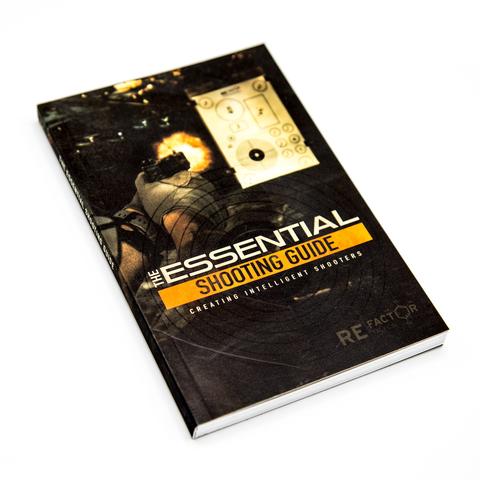Log that Sh*t……
By: Brandon Wright
Want to know how to get the next level in shooting?? Wondering how the pros get to the top?? Here is the answer: they shoot thousands of rounds a month and sometimes a week. Oh, you can’t afford that? Life gets in the way?? Well unless shooting is your job, it’s too hard to fit into everyday life. I get it, but there is hope. Here is how to fast track your success and maximize your time at the range.
The key to my success has been a logbook. To establish realistic goals for improvement you must first know where you’re at. Tracking your times and understanding what you can and can’t do is the key to finding your limitations.
It was watching videos of the big names in shooting, Rob Leathem, Jerry Miculek, JJ Racaza, & Max Michel that showed me what “fast” really is. Only then did I really understand what I wanted to achieve. But there was a problem, I knew these guys were the epitome of fast, but where was I? Before I could try to equal the greats, I had to know where I was. I learned this by recording my times on an assortment of drills. These records exposed my weaknesses, but they also allowed me to focus my training sessions on the specific areas that would make a difference. What I mean is this: I asked myself if a 1.00-sec draw with an A zone hit at 10 yards was realistic? How can I do it? What equipment do I need? Do I have the right holster, the right sights? How much time is lost with a level 3 holster vs no retention? How much of the sights can I see in that amount of time? Then watching Rob Leatham do it in .70’s and he said something very important to me, “Well I can see it but I can’t correct it!” This statement helped me see that he wasn’t getting a solid sight picture, even though it looked that way to me. He was really only seeing a flash, but he was aware enough of the sights to call a hit or a miss at that speed. It also helped me understand that adding 1 to 2 tenths of a second more can give the sight picture needed to make a hit. This helped me to understand that draw times are relative to the degree of accuracy required.
So now that I understand what I need to get the job done, and with understanding the max limits of how fast I can move, I can determine that yes, a 1.00-sec draw is achievable. Now, using a logbook I can track how I’m progressing. {Starting at 1.75 seconds in January and being at a solid 1.25 in March shows me that what I’m doing is working. So now, I’m .80’s at 7 yards and 1.00 at 10 yards.}
But logbooks are not just about draws and reloads. You can use them for target transitions, getting in and out of position, weapon transitions, and really any aspect of a shooting discipline that involves performing a task at speed. {I know it seems like a lot of work for 2 tenths of a second, but honestly, once you teach someone how to draw a gun from a holster, is there anything different between a basic shooter to an advanced shooter?} It’s the speed out of the holster that starts a stage in competition but for MIL/LE, that same speed can be the difference between life & death.
The Essential Shooting Guide is a great start for a logbook system. It provides multiple shooting drills, space for recording results and 91 pages of content. Of course, this is only a start. To maximize your results you really need to log all your practice when you are cold. I’d say after 75-100 rounds you are warmed up. At this point, anything else you log doesn’t really give you an accurate representation of your ability to perform on-demand. After so much repetition, of course, your times are going to be smoking fast. What we are really interested in is what can you do cold right out of the box. What are your times then? You will find, over time, you can track not only your cold times but compare them to stage runs. For example, you look back at a stage and say, “Why was I so slow on this stage?”, “What were my transitions like here?” Well looking back in your logbook, you can see that, in practice your hitting between .25-.75 transitions based on the distances. However, in the match your .50-1.10? You ask yourself, where am I losing time? Why is it different in a match? Am I focusing too much on aiming too hard? Now it’s time to work out the answers to these questions in practice so you can perform when it really matters.

About the author: Brandon Wright is a former State Trooper and DOD instructor. He is currently a sponsored professional shooter, holding multiple national titles and 30+ state, regional and local wins. Brandon is also an employee of Smith and Wesson and runs wrightshooting.com.










Leave a Reply
Your email address will not be published. Required fields are marked *